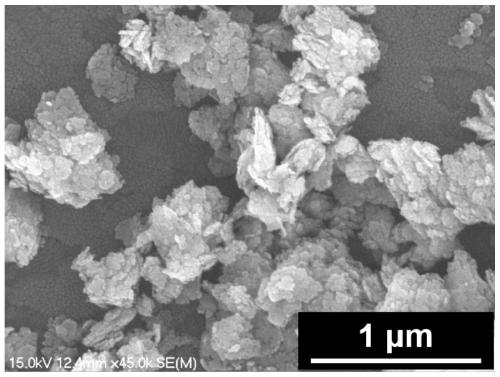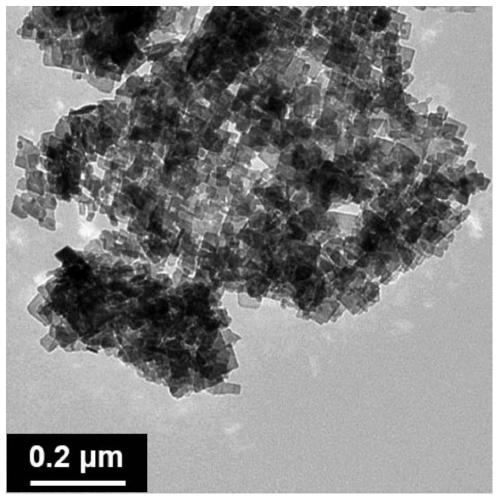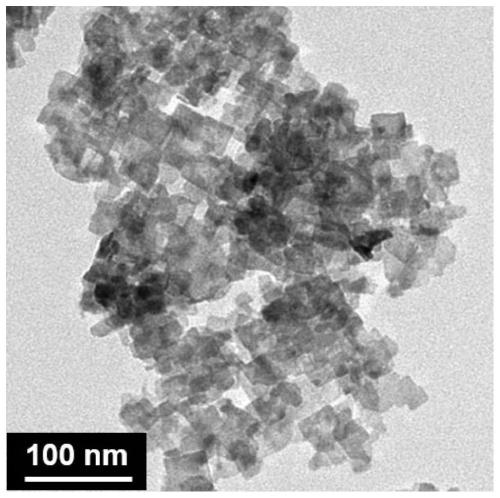Visible light response type platinum/black phosphorus/ oxygen-deficient bismuth tungstate composite material and preparation method and application thereof
A composite material, bismuth tungstate technology, applied in catalyst activation/preparation, chemical instruments and methods, chemical/physical processes, etc., can solve the problems of low photocatalytic efficiency, narrow light absorption, difficult synthesis, etc., to increase the specific surface area. , the effect of easy availability of raw materials and simple preparation method
- Summary
- Abstract
- Description
- Claims
- Application Information
AI Technical Summary
Problems solved by technology
Method used
Image
Examples
Embodiment 1
[0034] 1. Preparation of two-dimensional black phosphorus materials
[0035] Disperse 20 mg of bulk black phosphorus material into 25 ml of N-methylpyrrolidone, and perform ultrasonic crushing for 4 days with a cell pulverizer at a power of 400 watts to obtain a two-dimensional black phosphorus N-methylpyrrolidone solution.
[0036] attached Figure 4 And attached Figure 5 They are the SEM image and TEM image of two-dimensional black phosphorus, respectively. It can be seen from the pictures that the black phosphorus presents a thin sheet structure.
[0037] 2. Preparation of platinum-modified two-dimensional black phosphorus materials
[0038] Dissolve 3 mg of black phosphorus nanosheets in 20 ml of ethanol and 30 ml of water, add 0.2 g of sodium dodecylbenzenecyclonate, stir at room temperature for 20 minutes, add 50 microliters of ammonia water during the stirring process, and 100 microliters Formaldehyde solution and 0.1 ml of 0.1 mol / L potassium chloroplatinite soluti...
Embodiment 2
[0049] Example 2: Hydrogen production experiment by photolysis of water
[0050] The LabSolar-3AG (PerfectLight-Beijing) photocatalytic hydrogen production system was used for photolysis of water to produce hydrogen; 20 mg of platinum / black phosphorus / oxygen-deficient bismuth tungstate composites were dispersed in 10 ml of triethanolamine as a pore sacrificial agent and 90 Add 3% chloroplatinic acid hexahydrate as a cocatalyst to the mixed solution formed by 1 ml of water, and then ultrasonically disperse the mixed solution evenly. The solution was thoroughly degassed to remove air before starting the hydrogen evolution reaction. Using a 300W xenon lamp as the light source, the hydrogen production rate under visible light irradiation was detected by an online gas chromatograph.
[0051] attached Figure 9 The effect diagram of photocatalytic hydrogen production of platinum / black phosphorus / oxygen-deficient bismuth tungstate composite material, attached Figure 10 The photoc...
PUM
 Login to View More
Login to View More Abstract
Description
Claims
Application Information
 Login to View More
Login to View More - R&D
- Intellectual Property
- Life Sciences
- Materials
- Tech Scout
- Unparalleled Data Quality
- Higher Quality Content
- 60% Fewer Hallucinations
Browse by: Latest US Patents, China's latest patents, Technical Efficacy Thesaurus, Application Domain, Technology Topic, Popular Technical Reports.
© 2025 PatSnap. All rights reserved.Legal|Privacy policy|Modern Slavery Act Transparency Statement|Sitemap|About US| Contact US: help@patsnap.com



